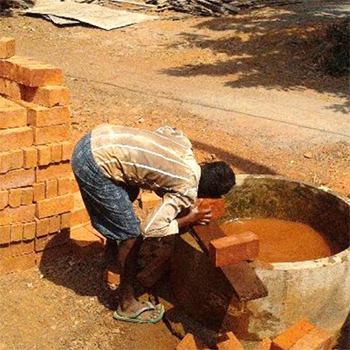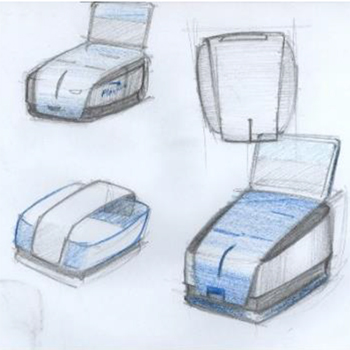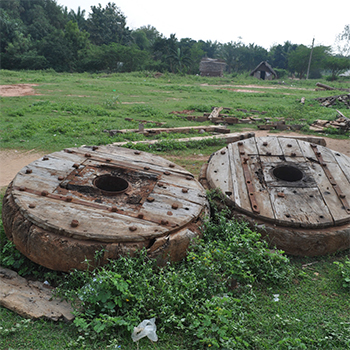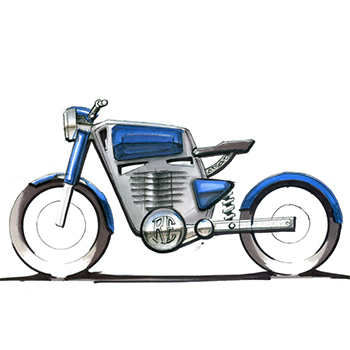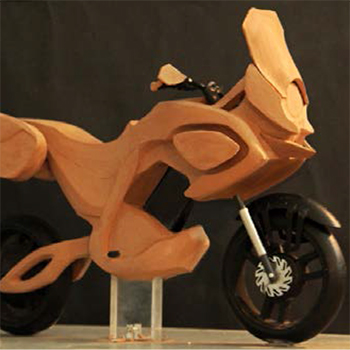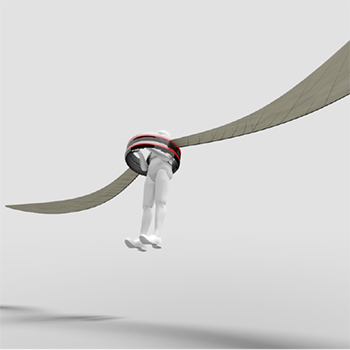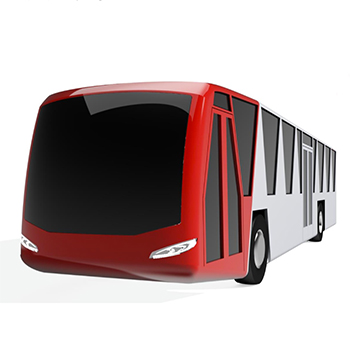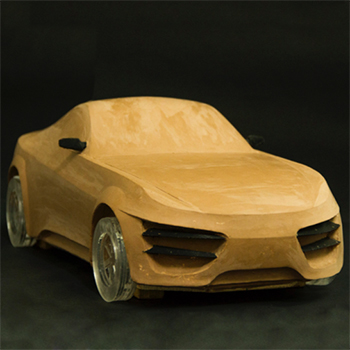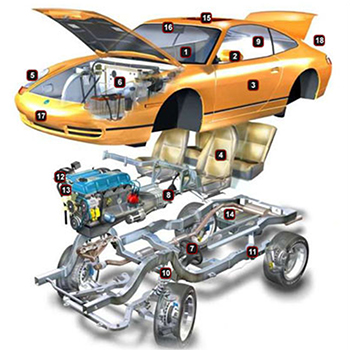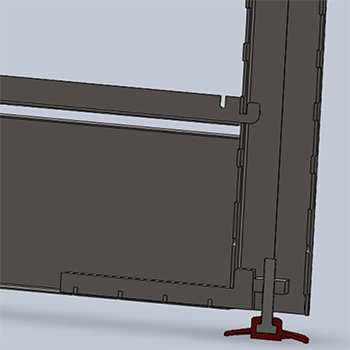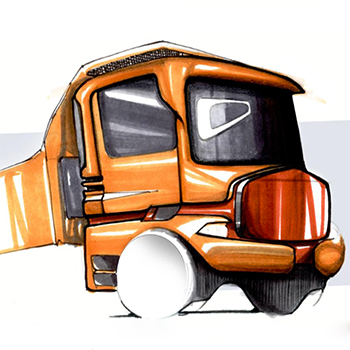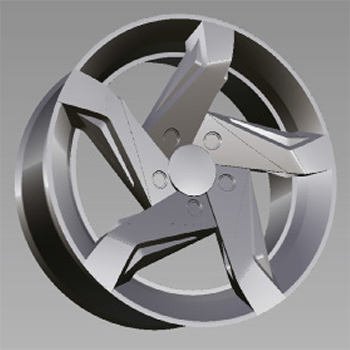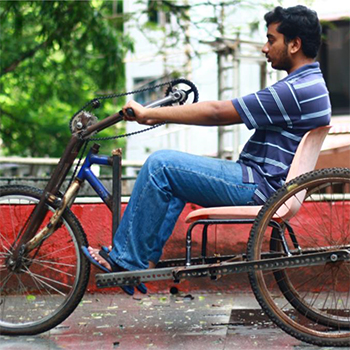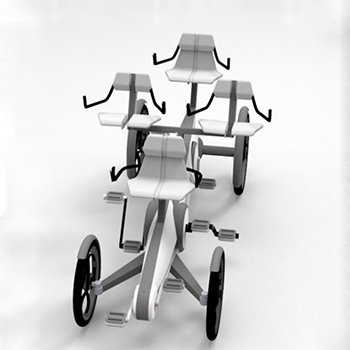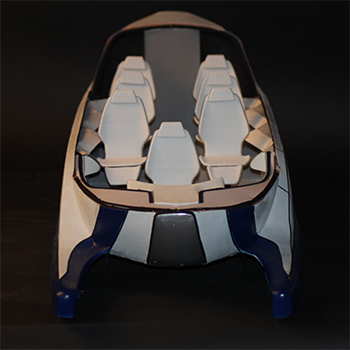Mobility Design
Batch 2012-2014
(27 items)
Mobility DesignBatch 2012-2014
(27 items)
(27 items)
Frugal Architecture and Design
by Alvin P Gopal
by Alvin P Gopal
Housing is a basic need of human being since the beginning of mankind. Now a days building a house has become a more polluting and wasteful activity and causes many direct and indirect impacts to the environment. Common building practices give importance to form and image and trying to make big monuments with high spatial qualities, wasting energy and having a little or no relation with the tradition and culture of the community in which it has been built. In contrast, frugal architecture always design spaces by means of minimal and effective use of resources to meet the needs of the user or community, which is intended to serve. Three basic factors of frugality are reducing, reusing and recycling. Three basic factors of frugality are reducing, Uncontrolled exploitation of natural resources and resulting pollution, introduced a new trend of using products made out of recycled, reusable and eco- compatible materials. In a 1. Introduction country like India many people are poor and can’t afford a quality housing. Here, the principles of frugal architecture become more relevant. The buildings and spaces designed with frugal approach, are technologically advanced and economically accessible to even poor people as well. Nnnnnn frugal approach, are technologically advanced This report covers various aspects of frugal architecture through Ar. Laurie Baker method of construction, which holds the principles of frugality. I have done my research with the help of “COSTFORD” (Centre of Science and Technology For Rural Development) Thrissur, Kerala, an organization cofounded by Laurie baker and doing lot of construction activities across various parts of Kerala. The research part included various sites visits of building construction at different stages, and the details have been documented with the help of images.
Details >>Summer Internship At SFO Technologies
by Alvin P Gopal
by Alvin P Gopal
SFO Technologies, a NeST Group Company, is a diverse business group that provides manufacturing services, industrial design, engineering, software, and systems integration. The group has a presence across the globe. SFO Technologies provides innovative product development solutions for customers worldwide in the healthcare, communications, process control & instrumentation, and transportation areas. In addition to the new product development, SFO Technologies undertakes value engineering activities where a need for redesign arises for various reasons, such as component obsolescence, value addition, or cost reduction. I have done my internship at SFO Technologies, Cochin, Kerala. The duration of the project was from 10/05/2013 to 15/06/2013. During my tenure, I got a chance to work on their few live projects and some future ones. The whole experience of the internship has been good and helpful in understanding the different methods going on in the industry apart from the usual academic procedures. The people over there gave me enough freedom to explore the concepts and were keen to encourage and put their valuable feedback in proper time.
Details >>Campus Bicycle for IIT Bombay
by Alvin P Gopal
by Alvin P Gopal
The aim of this project is to make a unisex bicycle for IIT Bombay students. This bicycle can be used by male as well as female students of the campus. Project deals with an attempt to understand the current commuting pattern of the students within the campus periphery and to identify problems. The existing campus bus service is not enough to handle the increasing number students. As an institute of national importance, IIT Bombay has been encouraging more sustainable, healthy and eco-friendly mode of vehicles for campus commuting. Educational institutes abroad have bicycles being extensively used for campus commuting mostly through bicycle sharing system. Concept of campus bicycle is not very common in India, however, there is scope for such a product. The project have started with market research to understand the current trend and existing products. Next step was the user study, including questionnaire survey and observation. The target user is the student community of IIT Bombay. The user study helped to understand the 1. Abstract 1 various user needs and their current problems. The climatic factors were also considered as a part of design process. A basic study of material was also done, which gave the directions to finalize the appropriate material for manufacturing. The insights from research part were considered to formulate the design brief. Based on design brief, various concepts have made and conducted and an evaluation by various users. Based on the concept evaluation, the one which got maximum preference was selected as the final concept and made a 1: 1 working prototype. The designed cycle can be used as a part of campus bicycle sharing system as well. Project makes an attempt to understand the basic needs of the students including the functional and aesthetical aspects.
Details >>Two Wheeled Delivery Vehicle
by Alvin P Gopal
by Alvin P Gopal
Increasing urbanization and changing lifestyles have introduced a lot of new trends in the Indian consumer market. E-commerce and home delivery of fast food are two of the most promising and challenging business areas. These areas are still at a nascent stage in India, but they are growing at a very high pace. Considering these emerging businesses and their associated delivery systems, there is a huge demand for two-wheeled delivery vehicles that enable fast, easy, and safe delivery of cargo. Currently, cargo and food delivery are primarily urban-centric. In India, the major problem in urban areas is traffic congestion. A two-wheeler that cuts through traffic with ease can be extremely helpful in the current urban scenario. These aforementioned factors motivated me to take on this challenging topic in order to understand and solve the current problems faced by the delivery person. The project started with a market study followed by a user study, which helped understand the market trends as well as the user. The user study consisted of a questionnaire survey, activity analysis, and a thorough observation of the users. A design brief was created based on the findings of the preliminary research. After that, ideation was started on the basis of the design brief. Four concepts were chosen from the prepared sketches and evaluated based on a few keywords, including cargo handling, cargo comfort, cargo safety, comparison with existing products, and styling by regular users. The concept with the most votes was chosen as the final one, and a 1:13 scale clay model was created as the final product.
Details >>Merging High tech with Low tech
by Anand Anbu
by Anand Anbu
Merging Hight tech and Low tech materials is like collaborating two traditions. The focus is to integrate highly optimized technology with low tech products in an efficient and effective manner. My project focuses on coming up with a FM radio in which the FM receiver circuit is open without any external form covering it. The project research ponders the following questions. Do we need a packaging cover design which encloses the functional elements? Is it possible to add aesthetic value to the radio just by showcasing the internal circuits without any external case desgin? Can the visual form be defined by the functional elements of the electronic circuit and still make the radio aesthetecally appealing? Is it possible to place the functional circuit elements in 3D space rather than a 2D printed board
Details >>To design a high-end luxury inter state bus for JCBL Stand out as a superior product
by Anand Anbu
by Anand Anbu
The Summer Internship was for duration of 40 days, from 13th May 2013 to 21th June 2013. Essentially, the idea of the internship was to gain experience by getting involved with an Industry/Firm/NGO and get exposed to their design work and processes. Further the objective of this project is to be part of the process where design is being implemented, contribute towards the process and learn from the situation based on my chosen area of interest
Details >>Design of Taxi Interior and Seating Layout for the commuters of Mumbai
by Anand Anbu
by Anand Anbu
In India, Taxis are the most used mode of Personalised public transport. Due to overcrowding in Mumbai trains, less frequency of buses and requirement for heavy luggage transportation, people prefer using taxis to travel within the city. With growing population and narrow roads, these taxis have to cater to different needs of the commuters. The scope of this project is to identify the issues that are specific to Mumbai taxi interiors. Further Interior design solutions are explored in order to address the issues of the passengers. The main focus of this project is on the seating layout arrangement within a given space taking the vehicle architecture into consideration. The needs of various Mumbai taxi commuters are also studied and different possible usage scenarios are created. The scenarios include luggage carrying commuters from/to railway stations and airports, and wheel chair-driven passengers. Based on these user scenarios, a suitable vehicle architecture is proposed. An interior space arrangement is explored based on the proposed vehicle architecture and an interior layout is finalized. After finalising the layout, the final design solution is derived by concept explorations and scaled mock-ups. A reconfigurable taxi interior space based on different usage requirements is also explored through various seat folding concepts
Details >>Last Mile Personal Mobility Vehicle for the Urban Environment
by Anand Anbu
by Anand Anbu
My project will focus on coming up with a concept which offers a compact single person electric vehicle that allows the user to commute freely without much hassles. The project has various scope such as addressing the last mile connectivity issue or it can be a compact leisure and fun vehicle or a personal mobility vehicle to be used within an environment (ex. academic campus). The major focus will be on designing a last mile personalised transport solution the connects the commuter seamlessly with the public transport systems. In the current scenario, the last mile vehicle which connects the commuter from his home/office to the public transport systems have lot of bottlenecks. The commuter like to use his own personal vehicle to connect to the local public transport networks. But the use of bigger vehicles occupies lot of parking space and lot of hassles. The project aims to come up with a electric bike as a solution for last mile. The main feature of the electric bike will be its carry-ability when not in use. Hence when the commuter uses the public transport like trains, he/she can carry his personal vehicle with him thus allowing larger portability and transportability. In this project, various compact electric vehicle possibilities will be explored and a design which addresses the user needs such as compactness, light weight will be addressed. A preferred riding posture along with the user requirements will be arrived at and a design which addresses the issue of portability of vehicle (when not in use) will be proposed with a possible mock-up of the final design solution.
Details >>Ther - South Indian Chariots
by Harish Kumar P
by Harish Kumar P
‘Ther’, the South Indian chariots, also called as temple cars. These vehicles are designed to carry the temple idols by deities around the temple. The temple car is taken out once in a year, that is popularly called as Ther Thiruvizha (temple car festival). Usually belonging to Hindu temples, these have a lot of social impact too. These are made up of materials ranging from wood, stone to more expensive materials like gold and silver. The process of making these also depends upon the place, the practices they follow and the type of craftsmen available in that location. These huge moving art pieces are made by people who are not from any engineering, design or art background, but learn from their
ancestors who had been making such structures generations after generations. How could they build such a huge and heavy structure which could move through the streets without any mechanical failures, how does it stay steady
even when it is turned by people who doesn’t know how reliable it is. How the whole Ther is made? And who all are involved in it? Who all are involved in building it? How it get its identity? , and more. The project is about finding out answers for these questions, to look into the future and see
how these will be made and how people will perceive these
colossal moving structures.
Details >>Summer Internship at Royal Enfield
by Harish Kumar P
by Harish Kumar P
The one-month internship programme at Royal Enfield ID Studio was a good learning experience. The main objective of this internship is to give an overview of motorcycle design and the process followed at Royal Enfield. The internship began with a quick overview of what was going on inside the studio, why the studio was set up, and a quick look at the line. Then, an overview of Royal Enfield's history and how the motorcycles have evolved to the present day. This was followed by a presentation on the overview of the process followed inside the studio and about the team structure. The team consists of six designers, an illustrator, a model maker, and a design engineer. A few exercises on concept development were given, with frequent feedback and presentations. It is followed by marker rendering techniques and a few tips on presenting the work. The last part of the work is a quick exercise in clay modeling. The internship came to an end with the feedback session. The feedback was very useful. Each and every designer gave their individual feedback.
Details >>Adventure Touring Motorcycle for India
by Harish Kumar P
by Harish Kumar P
Motorcycle tourism in India is growing in a rapid
phase. Indians when wish to go for long rides
especially to unexplored terrains, they usually take
existing vehicles to those kind of tours. On the
other hand there are motorcycles designed for the
sole purpose of adventure touring. And those are
very expensive for many Indians to afford. The
project is about designing an affordable adventure
tourer motorcycle to enable more Indian people to
go for such touring. The idea is to take an existing
commuter motorcycle from India, change its
ergonomics for the purpose of on road and off
road touring, consider the equipment Indians
would like to carry and position them on the bike
considering the usage pattern. Further the styling
should also reflect the character of adventure
touring.
Project 2 | IDC - IITB ADVENTURE TOURING MOTORCYCLE FOR INDIA
The design process starts with internet study about
the existing adventure tourers and the overall market
of these kinds of motorcycles. Study on what Indians
carry for touring and what is their view of an
adventure touring motorcycle is done. Study of Indian
two wheeler market and where does this segment fit
in is analyzed. A design brief is made with all the
insights derived during the research. In stage 2, Quick
ideations and renders were made. A few interesting
sketches were selected and developed to get some
direction in the project. Ergonomics of the new
vehicle is checked by building a rig. Different height
users ranging from 5th to 95th percentile were
selected and tested on the rig. The optimal
positioning of the luggage was iterated using a 3D
model. Using that as an underlay, more concepts were
made and evaluated. In stage 3, the most promising
concept is then taken for more detailing and detailed
renderings were made. This was then taken to a tape
drawing and 1:3 scale clay model was made.
Details >>Medical First Responder vehicle for Chennai
by Harish Kumar P
by Harish Kumar P
First responder vehicles are specialized vehicles which are made to respond for any emergency purposes. They are usually used for fire breakouts, rescue missions, medical emergency, or even for emergency police patrol cases. Their main purpose is to reach the destination faster to take control of the situation even before the actual task force arrives. The project deals with medical first responder vehicles. These vehicles can reach the patient or victim even before the ambulance can reach the spot. This vehicle got to be fast and small enough to cut through traffic and reach the patient to give first aid. In medical terms, they call it the golden minute treatment, in which the patient is given immediate medical response. This immediate response is very critical in cases like Cardiac arrests, airway problems, insects or snake bites, accidents occurring on roads, at home or at workplaces. Paramedics treat the patients on the spot before the ambulance arrives. Mahindra Reva E20 was selected as the base vehicle and the main focus was on the interiors. The Design process starts with investigating the need and scope of the project by doing research on the existing projects and actual use of this vehicle in Indian context. The project is divided into three stages. The first stage concentrates on the need of such a vehicle: Research on the existing products, the users of the vehicle, equipment to be carried during in that vehicle. The vehicle that is going to be used as a base vehicle will also be looked into in this stage. A quick look into the scenarios, the city Chennai which is the target location of the vehicle, will also be touched upon in this stage. The stage ends with generation of inferences out of the user study and a design brief which states the requirements, the technical details and other must have points in that vehicle. Stage 2 starts with quick ideations on how the concepts might be. Quick renderings are also made in this stage. Then package exploration is made to understand how the equipment and the paramedics will be placed inside. Mockups of the equipment simulating the size and weight were made and the package was evaluated on an actual car. Using the selected package, various concepts were made and they were evaluated based on criteria’s like quick accessibility, securing the equipment. The selected concept
is refined further and a 1:5 scale
interior model was made.
Details >>Nature and Forms: Emergency Evacuation Flight Suit
by Harsh Vardhan Tripathi
by Harsh Vardhan Tripathi
Nature has various interesting forms that have developed through thousandsw of years of evolution. They are not just interesting to look at, but also have some core functionality baked into them. This project aims to study these forms, choose one of them and develop the form into something that not only celebrates the form being studied, but also uses its functional properties. In this case, the form being considered is that of the winged seed of the maple tree.
The structure of the seed, its reason of occurrence and properties were studied, and attempt was made to capture them into the design of a winged suit for emergency
evacuation of skyscrapers. Skyscrapers currently don’t have efficient or fast modes of evacuation in case of emergency. This wing suit aims to solve that problem, through an affordable and easy to use solution, by leveraging the
properties of the winged maple seed.
Details >>Styling of Front and Rear ends of a City Bus
by Harsh Vardhan Tripathi
by Harsh Vardhan Tripathi
The Litebus project is aimed at creating a lightweight indigenous bus made out of aluminium. A lightweight bus made of Aluminium has many advantages, as outlined below: “The advantages of using aluminium in the bus industry are manifold. Aluminium can be extruded into complex shapes, allowing for intricate design and integrally strong structures. Modern buses with aluminium bodies are several hundred kilograms lighter than those built using conventional methods of construction. This increases the number of people that can be transported for a given maximum permitted weight and reduces running costs…” (world-aluminium.org, 2013) The body is to be made of an aluminium Spaceframe attached to sub-frames made of steel at the front and rear which carry powertrain and other subassemblies like powertrain, etc. The aluminium Spaceframe needs to be as light as possible for there to be a meaningful overall weight reduction. One way to do this is this is to have the frame to be stronger so that it needs less material.
Details >>Design of Low-Cost Rural Public Transport
by Harsh Vardhan Tripathi
by Harsh Vardhan Tripathi
Public transport in rural and semi-urban India is largely privately owned, but suffers from the problem that the vehicles available in the market are designed with urban/semi-urban markets in mind. Hence, the owners modify these vehicles extensively to suit the rural requirements, which compromises the safety, comfort and integrity of the vehicle. Also, since the vehicles were not designed with rural markets in mind, they do not tackle the problems in Indian villages specifically. The project was to develop a vehicle tailored for the low end of the rural market, improving upon the existing autorickshaws, but being cheaper than the UVs. The focus, however, was on the interiors. Since the population under study was mostly illiterate and not very articulate, most of the study was done by observation, although a basic questionnaire was also used. An interior layout was prepared which was found to address the problems found in the best possible way. A digital model and a physical model of the same were also made .
Details >>Designing a Micro Sports Car for India
by Harsh Vardhan Tripathi
by Harsh Vardhan Tripathi
As the younger earning class in India expands, there are more people with more disposable income. This means that they look for lifestyle vehicles. While this market niche is being effectively tapped by the motorcycle industry, the car industry lacks any suitable alternative, as such leisure vehicles, especially sportscars tend to be expensive imported vehicles. As a result, the users tend to buy either used imported cars or buy a regular car and invest in modifying it to suit their tastes and performance needs. The project was to develop a light and inexpensive sportscar that would cater to this market. By keeping the overall length under 4meters and using a small but powerful engine, it can take advantage of the tax breaks, and be available for a low price. The focus was on the form of the car which should excite the buyers and connect with them, as well as grab attention of onlookers.
Details >>Vehicular Communication for Safety
by Saurabh Nimsarkar
by Saurabh Nimsarkar
Word safety in automotive sense does not mean safety of the driver but also of the passenger,pedestrian and environmental. Vehicle Safety is of paradigm importance. Safety augmented environment impact are two driving forces which propels the research and development in auto industry which eventually trickles down to the day to day vehicle we use. In India, the motor vehicle population is growing at a faster rate than the economic and population growth. The urge in motorization coupled with expansion of the road network has brought in adverse factors such as the increase in road accidents. Low-income and middleincome countries account for about 85% of the deaths According to the World Health Organization (WHO), road traffic injuries are the sixth leading cause of death in India. This is mainly due to lack of infrastructure,technology,policies and awareness. Vehicular communications includes exchange of information to boost efficiency, traffic safety, and occupant comfort. Latest studies, concludes that about 60% of roadway accidents could be avoided if the driver was warned just one-half second before the collision occurs. This report makes an attempt to study the existing safety and communication features and gives a detailed account of how accidents could have been averted if there had been safety and communication features.
Details >>To design and manufacture a system competitive to TN9 shelving system which will be manufactured locally befitting Indian scenario
by Saurabh Nimsarkar
by Saurabh Nimsarkar
CAEM is a global company for manufacturing and services related to the shopfitting and retail industry. From its historical headquarters in Subbiano, Italy, the group is constantly evolving and includes several strong companies around the world, making Caem not only global but also local. CAEM India Shelving Private Limited was established in India in 2005 and has around 30-35 employees. CAEM has an office in the heart of India—Nagpur. The process which CAEM follows for Shop Concept Design & Consulting is: Brief from the customer to understand what the customer has in mind: what is the customer's retail business idea, key factors, and success factors Our designers will determine what you require from us and chalk down multiple concepts pertaining- • Cohesive Corporate Image: from the logo to shop signs, business cards to lettering, staff clothing to wall colors. • Concept Interior Design: Typical or actual store design with the most detailed material and detail definition. • Traffic, merchandising, and product visual display • Light technical design • Furniture Development: from concept to finished product from various suppliers • Make reservations for all of the above.a
Details >>Redesign of Tipper Truck
by Saurabh Nimsarkar
by Saurabh Nimsarkar
Tipper truck/Dump truck is the most essential and necessary vehicle used in construction worldwide. Tipper truck are exposed to hostile terrain as it has to carry lose gravel soil over mountains and mines. There have been frequent incidents of toppling of tipper truck because of inadequate stability on une - ven terrain and drivers’ lack of visibility in unfriendly environment. In Indian sce - nario drivers work for prolonged period even in nights. This eventually causes fatigue and lack of productivity causing possible delay in subsequent loading and unloading cycles. Owner of the truck usually buys the truck considering cost of the truck, capacity and fuel efficiency for overall productivity often ignoring drivers need and comfort.Lack of rules and guidelines for safety augments drivers problem. A driver of the tipper truck faces serious problem of heat,vibration and dust inside the cabin which is claustrophobic and messy. There lack of visibility of dump bed and he does not get feedback of loading and unloading operation. Driver has to depend upon the helper for audi - tory feedback. Problem is aggravated when dump is not evenly distributed on the bed and may lead to toppling. Most Indian tipper are mounted on com - mon HCV chassis and often tipper spe - cific exterior essentials are often turned a blind eye. An effort has been made to mitigate problems and make tipper more user centric.
Details >>ShareSavaree: Public Sharing Vehicle For India
by Saurabh Nimsarkar
by Saurabh Nimsarkar
ShareSavaree is a public sharing two wheeler for urban India. Pubic sharing system consists of fleet of vehicle of same type kept at self-serve unmonitored station. User can hire these vehicles from any transit station, may use it for desired duration of time and return the vehicle at any other transit station. This gives user the benefits of private vehicle with no cost of ownership and maintenance by paying the rent of the vehicle . Project explored the sharing systems of bicycle, car and electric bike around the world to arrive at a benchmarked system. This benchmarked system was pertaining to parameters like hire cost, proximity and reach of transit station, availability of vehicle in a transit station, system infrastructure, vehicle redistribution and overall user experience. Scenario of daily office point to point travel in Mumbai City and persona of urban technology oriented user above age of 18 were fixed to arrive at a design brief. Technology survey of personal mobility vehicles and product positioning were explored to arrive at a design. Ideation, exploratory sketches and renders were made and selection of final design was based on the criteria listed in the design brief. Cell phone, as an interface between user and vehicle, was explored to deal with user registration, payment, ticketing, vehicle booking, checking in and out of vehicle, theft and vandalism mitigation, and overall user experience. Vehicular concept and renders were made followed by Alias digital model. 1:3 clay model of concept was sculpted. ShareSavaree makes an attempt to conceptualise a future vehicle which will be used in a sharing system, enabling an alternative means of 'on demand travel', and would ease traffic and environmental problems
Details >>Honeycomb Structures for Use In Automotive Industry
by Tanmay Ohri
by Tanmay Ohri
Honeycomb structures are natural or man-made structures that have the geometry of a honeycomb to allow the minimization of the amount of used material to reach minimal weight and minimal material cost. The geometry of honeycomb structures can vary widely but the common feature of all such structures is an array of hollow cells formed between thin vertical walls. The cells are often columnar and hexagonal in shape. A honeycomb shaped structure provides a material with minimal density and relative high out-of-plane compression properties and out-of-plane shear properties. Man-made honeycomb structural materials are commonly made by layering a honeycomb material between two thin layers that provide strength in tension. This forms a plate-like assembly. Honeycomb materials are widely used where flat or slightly curved surfaces are needed and their high strength-to-weight ratio is valuable. They are widely used in the aerospace industry for this reason, and honeycomb materials in aluminum, fiberglass and advanced composite materials have been featured in aircraft and rockets since the 1950s. They can also be found in many other fields, from packaging materials in the form of paper-based honeycomb cardboard, to sporting goods like skis and snowboards.
Details >>Designing an Electric Hybrid ‘SUV-Sedan’ Crossover Vehicle For Urban India in the Year 2020
by Tanmay Ohri
by Tanmay Ohri
Looking at the current shift in the automotive industry towards the Electric Vehicles this decade is quite accurately being called the ‘decade of Electric vehicles’. It is very much possible that by the year 2020 there might be a plethora of electric automobiles well absorbed in the market. There have been many attempts made in this industry to establish the electric vehicle, but none of them succeeded. The current picture of the electric vehicle technology seems very promising, with its advancement in the technology as well as acceptability in the market. This shift towards the electric mobility for future by most of the key players of automotive industry ensures that Electric Mobility is here to stay. Equally interesting is the Compact SUV segment which has grown substantially and has established itself as a separate CROSSOVER segment. The people in urban areas have special fondness for this SUV-hatchback crossover segment as it provides the experience of an SUV without the hassle attached to its everyday use. The sedan segment on the other hand has also enjoyed a boom with numerous vehicles being launched by almost all the existing automotive brands due to the level of comfort, efficiency and practicality a sedan provides. It is quite needless to highlight the exceptional growth Indian market has seen in the automotive sector over the last few years. With the predicted future growth of auto sector in India, special focus on the demand of this market has to be put. The project aims at designing an SUV-Sedan Crossover vehicle for India in the year 2020 that runs on an Electric Hybrid drive technology. It deals with exterior design of the vehicle, slightly establishing the electric drive technology being used in it in the year 2020. The idea behind it is to provide the benefits of an SUV vehicle with added experience of a sedan, complete with an efficient electric hybrid drive system for India in the year 2020.
Details >>Customization of SUV (Grand Vitara) with New Accessories Design for MGA
by Tanmay Ohri
by Tanmay Ohri
As a recent trend, there is a growing need of customization of the vehicle. Since MSIL is the latest to enter this segment, it is needed to design and develop accessories that would change the physical appearance of the vehicle exterior. The accessories should be add-on parts on the OE vehicle and should not require chopping or elaborate modification of the vehicle.
Details >>Tricycle for Paraplegic
by Unni Mohan
by Unni Mohan
The project idea was suggested by Prof Nishant Sharma. Professor had previously used a standard tricycle. This experience of using trike, had encouraged him to come up with a design project for providing a better designed product for paraplegic .Quick research through the market reveled that model which are available have similar layout and found to be less involving to use.The project started with studying examples from India. After preliminary research ,for user
study paraplegic foundation in Sion and fellowship of physically handicapped in Mahalaxmi was visited. Detailed study of videos from user study enriched the team with valuable insights. This was followed by a brain storming session to generate and group keywords. Design directions were compiled after brainstorming. These design directions were constantly referred for concept development. Initial stages of concept development was done with the help of
wireframe models and CAD. Selected concept was taken up for prototype development. After two iterations a promising prototype was developed.
Details >>Design of Tricycle for Paraplegic
by Unni Mohan
by Unni Mohan
The project idea was suggested by Prof Nishant Sharma. Professor had previously used a standard tricycle. This experience of using trike ,had encouraged him to come up with a design project for providing a better designed product for paraplegic .Quick research through the market reveled that model which are available have similar layout and found to be less involving to use.
Details >>Qudracycle
by Unni Mohan
by Unni Mohan
To design and develop a human powered Qudracycle capable of carrying four people. Idea behind the project is to bring out a sustainable mobility solution, which brings people together (sociable). Qudracycle
Four-wheeled human-powered land vehicle Sustainable transport
Long-term goals of sustainable transport includes migrating
transportation from fossil-based energy to renewable resources.
Human powered mobility comes as an ideal sustainable transport
solution and probably the most challenging .
Sociable
The vehicle can act as a platform to bring people together ,providing an
opportunity to make ride interesting and interactive.
Details >>Water taxi for inland water ways-Kerala
by Unni Mohan
by Unni Mohan
There are 67 navigable rivers in the state of Kerala. A peculiar feature of Kerala: canals link the lakes and backwaters to form an uninterrupted inland water navigation system. The T S (Travancore-Shornur) Canal, built in 1880, was the main water transport route from Trivandrum to Cochin and beyond till the 1950s. It was the main trade route, especially for transporting spices and grains to the ancient port of Kollam. The per km cost of development of a waterway is insignificant compared to a rail or highway. The maintenance cost of a waterway is also lower. The time taken to develop waterway routes is negligible. IWT is more environmentally friendly than either road or rail.
Details >>